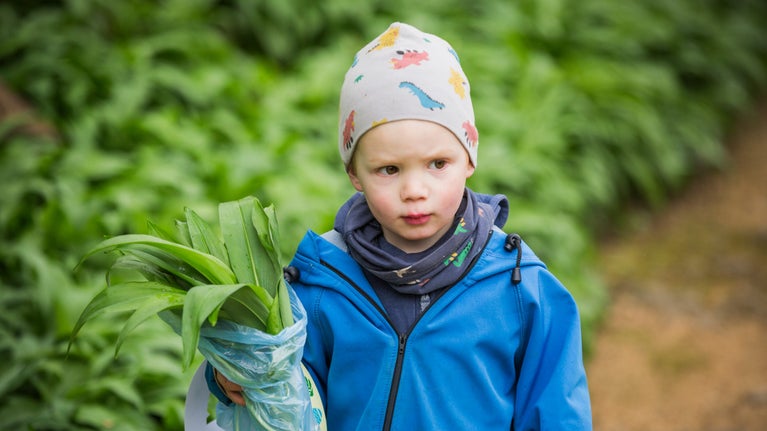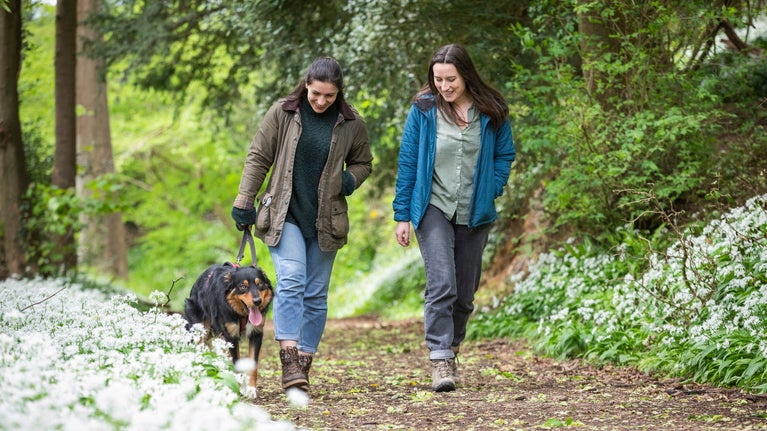
Explore countryside and woodland
Get closer to nature and explore hundreds of outdoor places. We've got miles of hillsides and woodland waiting to be discovered.

Wild garlic grows in damp, woody areas from late winter until the end of spring. Discover where you can find wild garlic in some of the woodlands in our care and savour its fragrant smell as you stroll.
Foraging is not permitted at the protected sites in our care, including National Nature Reserves (NNR) and Sites of Special Scientific Importance (SSSI). Please check before you visit.
The most tell-tale sign that you’ve discovered wild garlic is its smell. If you’re walking through a patch of countryside where wild garlic grows, your nose will alert you.
You can eat the leaves raw or cooked and they taste milder than shop-bought garlic. When foraging, it’s important to not uproot the plant. Only pick the leaves and flowers and avoid taking too much from one area.
Wild garlic looks similar to lily of the valley, which is poisonous. The key difference between the two plants is that wild garlic always smells – yes, you guessed it – of garlic. If you’re in any doubt about which plant you’ve found, do not pick or eat it.



Get closer to nature and explore hundreds of outdoor places. We've got miles of hillsides and woodland waiting to be discovered.

We believe that foraging for wild food brings us closer to nature and reminds us that we need to take care of it. Find out how to forage safely and sustainably at the places in our care and beyond.

Enjoy the colourful mixture of seasonal textures in this tasty salad, which provides an ideal accompaniment to your favourite dishes.

Check out some favourite places to see bluebells in the UK, including trails through ancient woodlands, walks in lush valleys and around nature reserves.

Visit somewhere new and explore seasonal gardens, historic castles and outdoor spaces. With over 500 places to discover, where will your adventures take you?